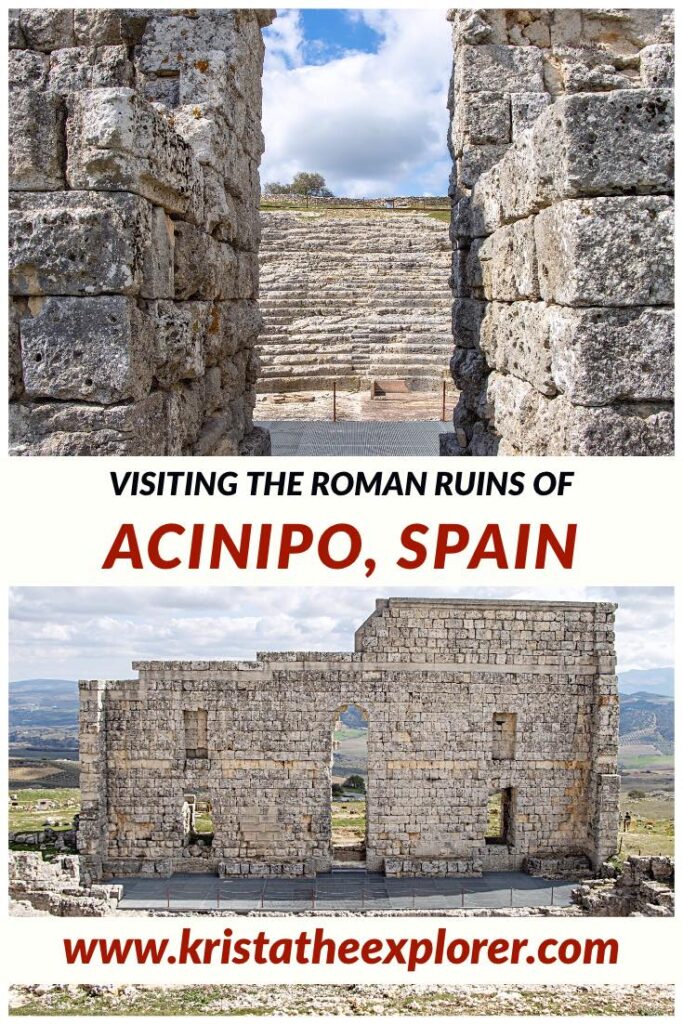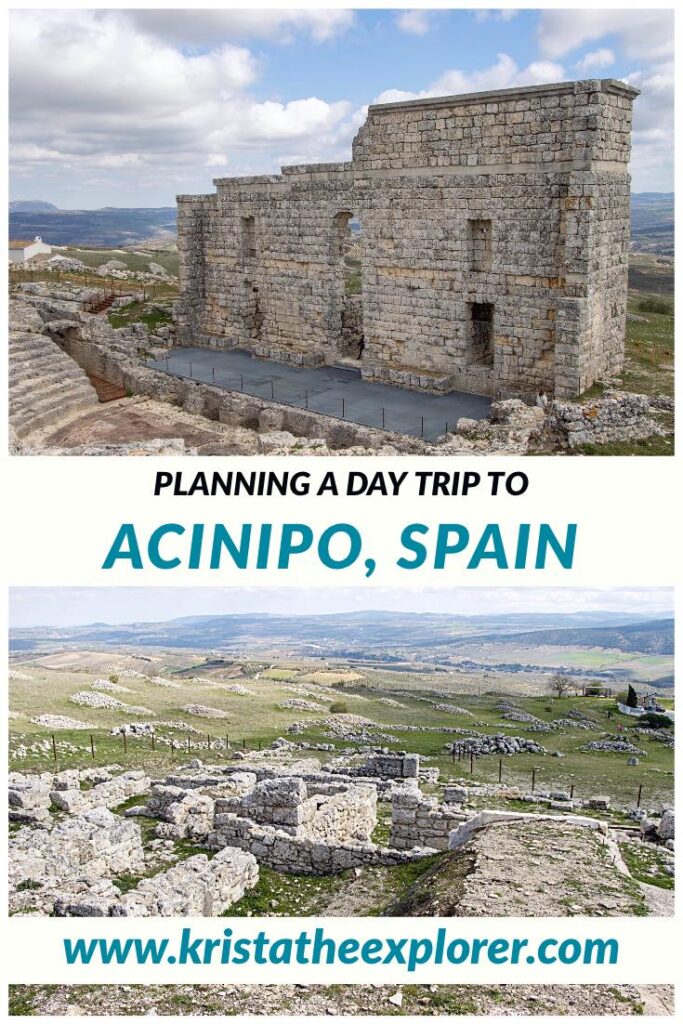Spain is full of incredible Roman ruins, from the aqueduct in Segovia to Italica and the Roman Theatre in Malaga. That’s not to mention the abundance of ruins in the north of Spain as well. But not many people have heard of the Roman ruins of Acinipo before.
The Romans first came to Spain in the 3rd century BC, when they built Italica, and for the next 700 years they were the dominant force in the country. Like many parts of Europe, Spain still proudly boasts a large number of Roman ruins. While some lay almost unnoticeable, others have been expertly preserved and restored for everyone to enjoy. In southern Spain, you won’t find anything quite like the Roman ruins of Acinipo.
- Where is Acinipo located?
- Acinipo opening times & entry fees
- Facilities at Acinipo
- Parking at Acinipo
- How to get to Acinipo
- History of Acinipo
- Acinipo's prehistoric ruins
- The Domus
- The Roman Amphitheatre of Acinipo
- Views of the countryside
- Roman bathhouse
- Why you should visit the Roman ruins of Acinipo
Where is Acinipo located?
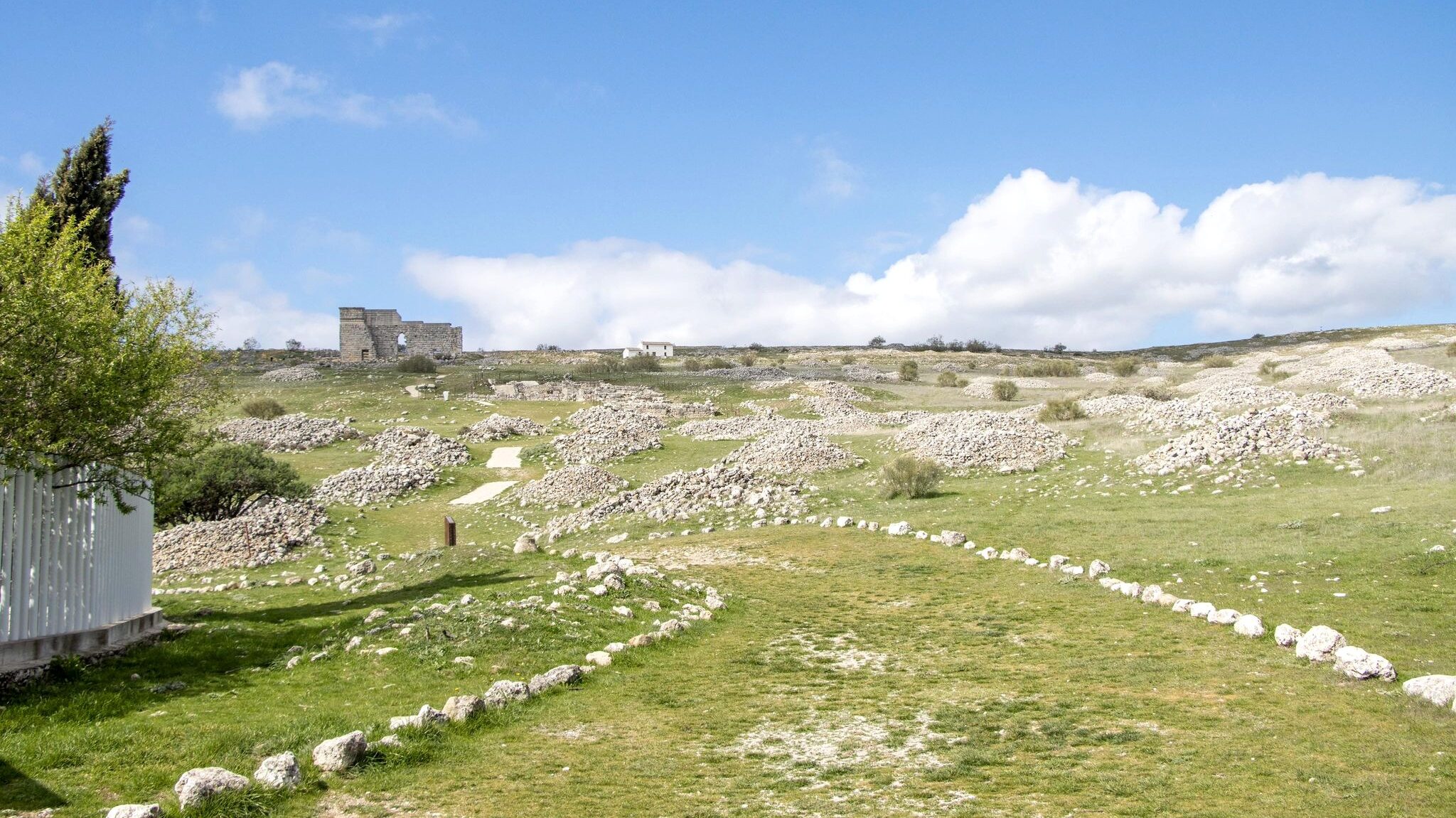
The Roman ruins of Acinipo are located a mere 20 km from the very popular tourist destination of Ronda. The ruins are also within close proximity to several unique white villages in Andalusia, such as Setenil de las Bodegas. If you’re planning a Malaga road trip, Acinipo is a great place to stop as it’s not too well known with tourists and it’s only accessible by car.
There are plenty of day trips from Malaga to go on, and Acinipo takes only 90 minutes to drive to from the city centre, so it’s worth considering.
Acinipo opening times & entry fees
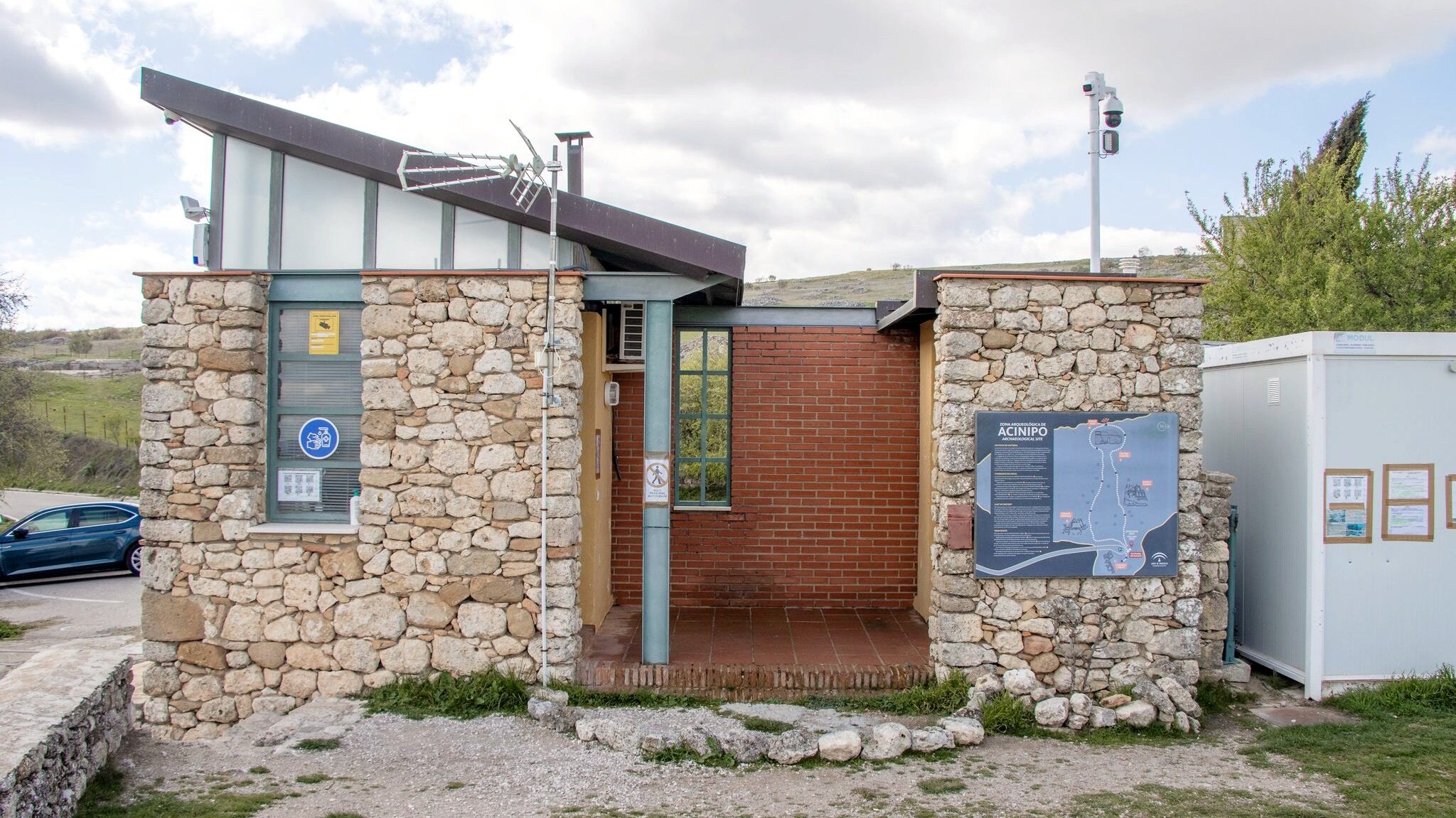
The Roman ruins of Acinipo are generally open 09:00-14:30 from Wednesday to Sunday each week, but this may change in the off season. The best way to find the opening times of Acinipo is to check their Facebook page for the latest updates. Acinipo is completely free to enter too. Admission isn’t allowed less than 45 minutes before closing, so make sure you arrive with enough time to spare.
Facilities at Acinipo
When you arrive at Acinipo you’ll notice that there is a small office at the entrance. There’s a very nice man that works there who will point you in the right direction and tell you about some of the site’s history (he only speaks Spanish though). There are information boards along the route that offer explanations in both Spanish and English though. The entrance to the site is also where you’ll find the toilets.
Parking at Acinipo
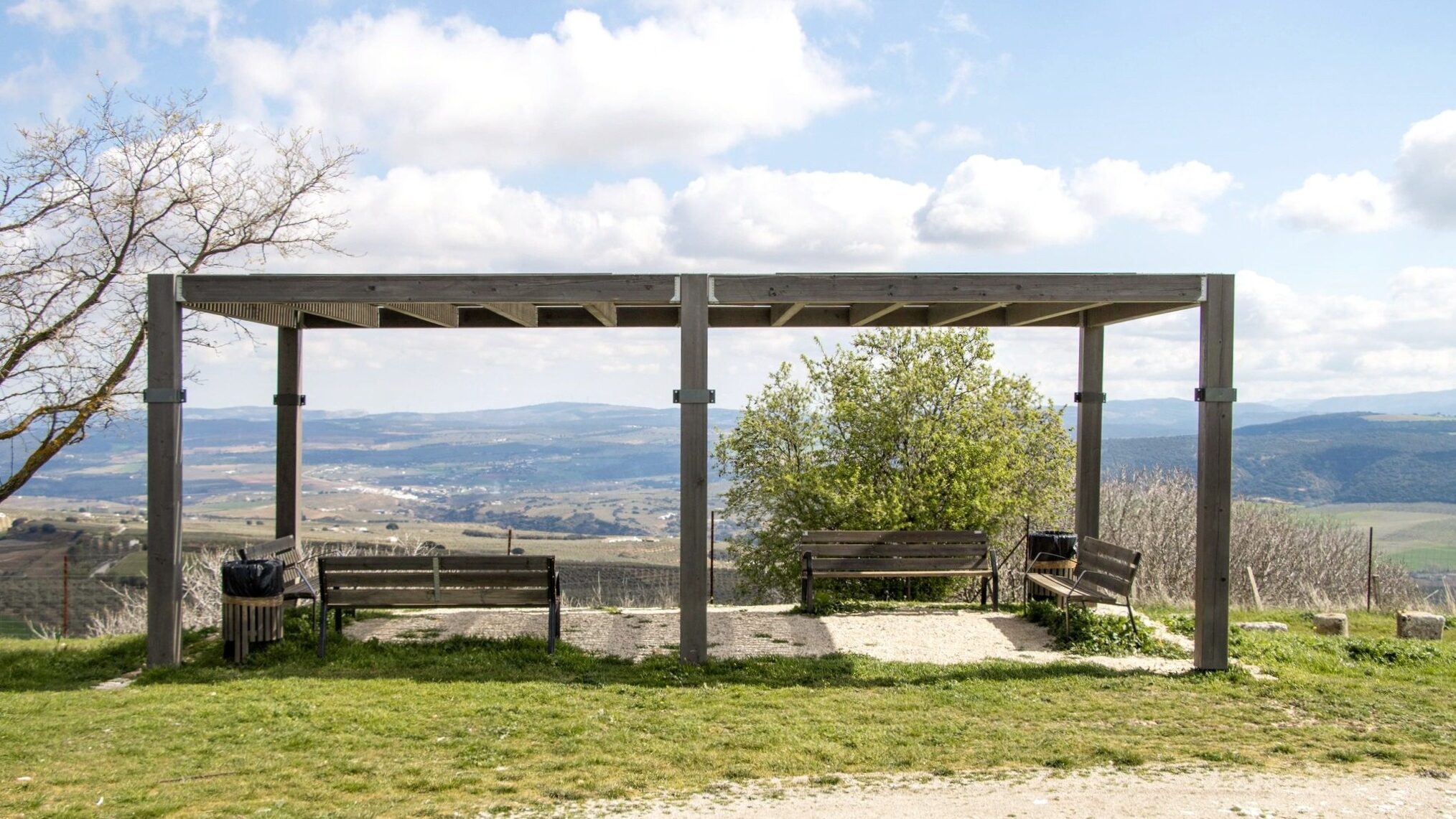
Parking at Acinipo is very easy, as there is a large parking lot right in front of the main entrance. No buses go along this route so you don’t need to worry about spaces being taken up, and the ruins are never overly busy either.
How to get to Acinipo
Acinipo is easy to get to, but the only way to get there is by car (no public transportation). If you’re leaving from Malaga it will take around 90 minutes to get to, and you’ll take almost the same route as you would for Ronda. The last part of the journey is a steep uphill drive, but the roads are fully paved and wide so there’s no need to worry if you’re a nervous driver.
History of Acinipo

Acinipo is an ancient archaeological site that actually predates the Romans, dating back to the 9th century BC. It wasn’t until the Romans arrived in 206 BC that Acinipo grew into an important town and stopping point for wealthy merchants travelling across the south of Spain. It even minted its own currency!
From the 3rd century AD the town started to decline, and was eventually forgotten about in favour of Ronda. Acinipo is sometimes referred to as Old Ronda, and today much of the town still remains uncovered.
Acinipo’s prehistoric ruins

Before you start your trek up the hill, just to the left of the entrance are a collection of prehistoric ruins, labelled as cabins on the map. They’re the oldest part of Acinipo, dating back to the 9th century BC, and although they don’t look like much today, they outline the remains of a typical village from this time period. You can learn more about the interesting artefacts found at this site by visiting the Municipal Museum of Ronda.
The Domus
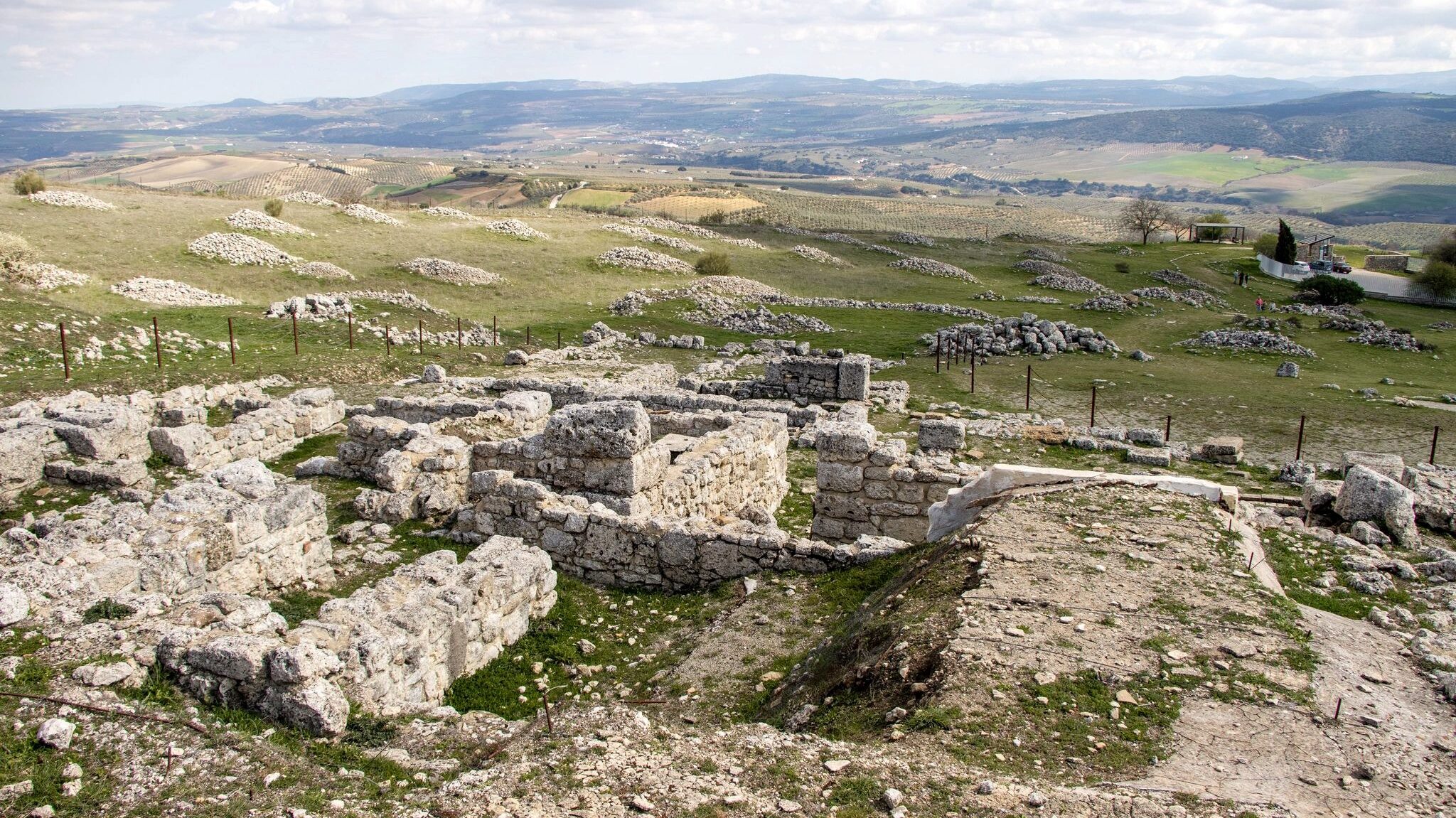
Halfway up the hill is where you’ll come across the Domus. Whereas not much remains of the prehistoric settlement, the Domus is a clear example of a wealthy aristocratic Roman family’s home and offers a fascinating insight into how they would have lived. The Domus was built on two levels, one for the kitchen and storage space and the other where the family lived. I wasn’t expecting to see this type of Roman ruin while visiting Acinipo, so it was a nice surprise and was interesting to read about.
The Roman Amphitheatre of Acinipo
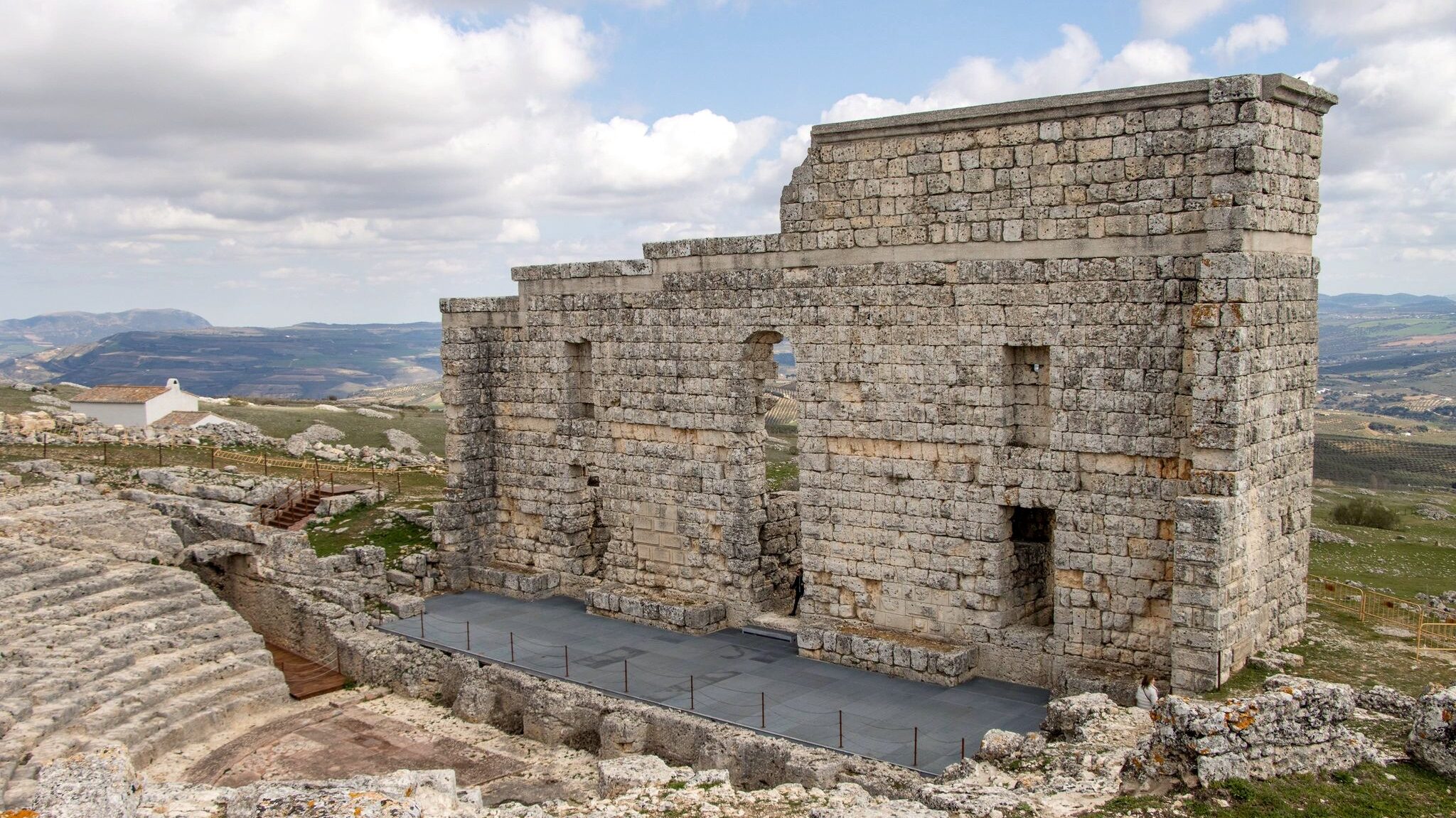
If you’re visiting the Roman ruins of Acinipo, chances are it’s because of this incredible Roman Amphitheatre. Dating back to the 1st century, this Amphitheatre stands as one of the oldest in Spain, and would have held up to 2000 people. It sits at the top of the hill, so during the Moorish occupation of the south it was in the perfect position to be used as a watchtower, overlooking the surrounding countryside. It’s one of the best places to visit near Ronda, so make sure you add it to your itinerary.
Views of the countryside
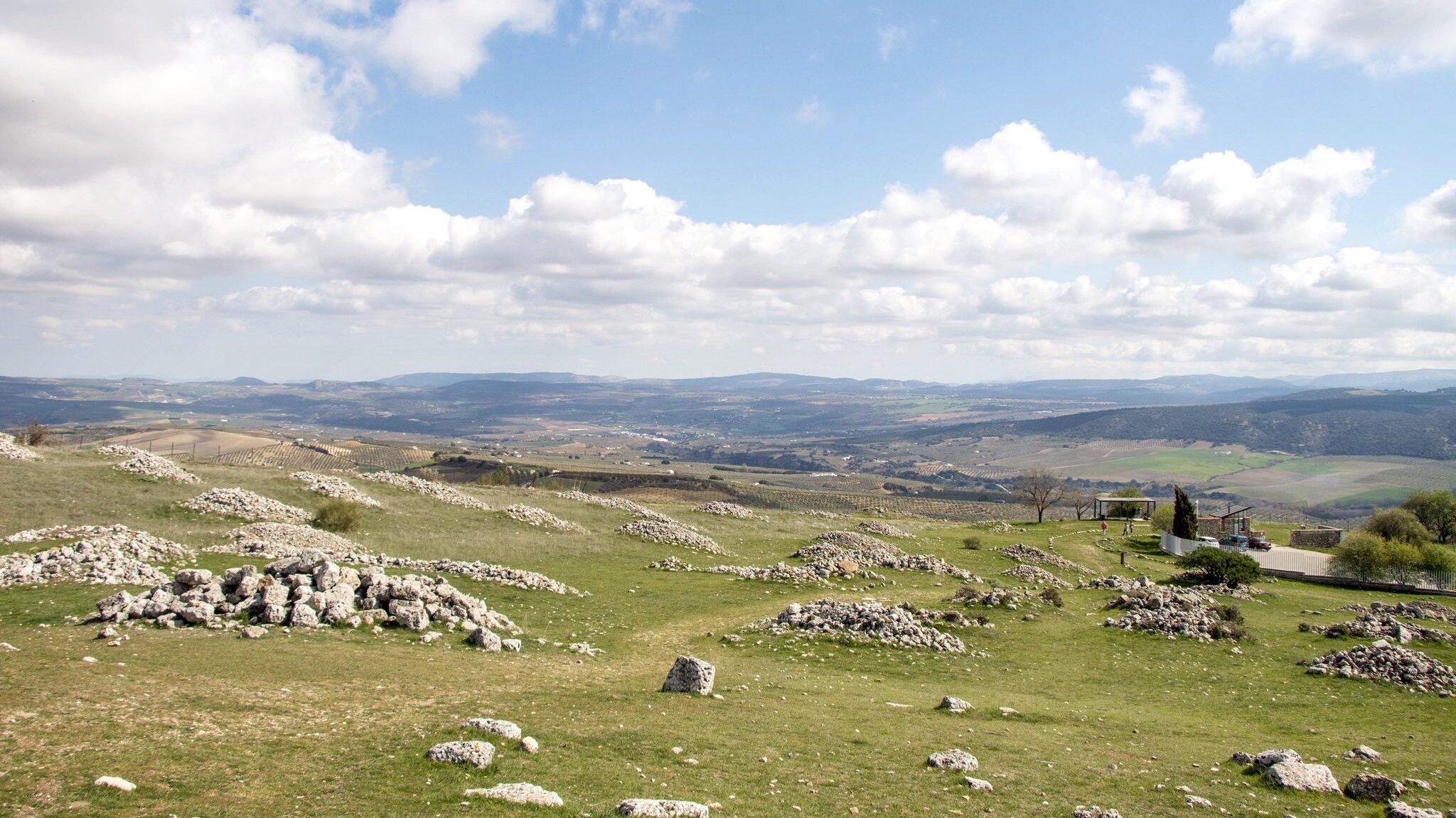
Before leaving the Roman amphitheatre, make sure you walk to the very top of the hill, where the seating finishes, and take in the incredible views below. There’s a reason this Roman theatre was built here. On a clear day you can see quite far across the mountains. You can also see the extent of how much of this archaeological site is still yet to be excavated.
Roman bathhouse
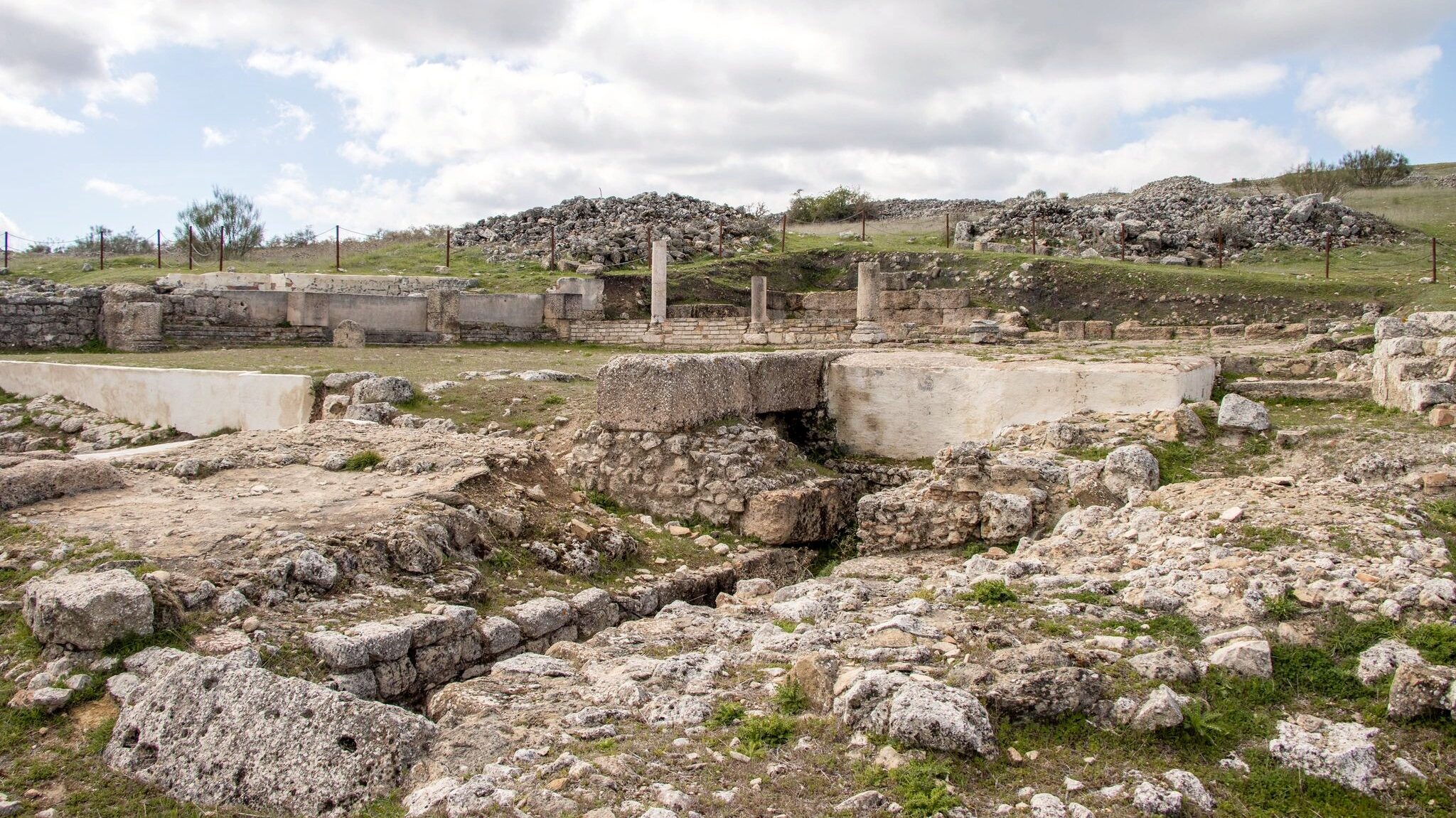
As you make your way back down the hill along the trail, there’s one more Roman ruin to look at. The Romans were very particular about personal hygiene, and all of the most important towns and cities had at least one bathhouse in it. Acinipo was no exception, and this large bathhouse would have included a latrine, changing room, and rooms of different temperatures that had underfloor heating. It sounds very much like a modern day spa to me!
Why you should visit the Roman ruins of Acinipo
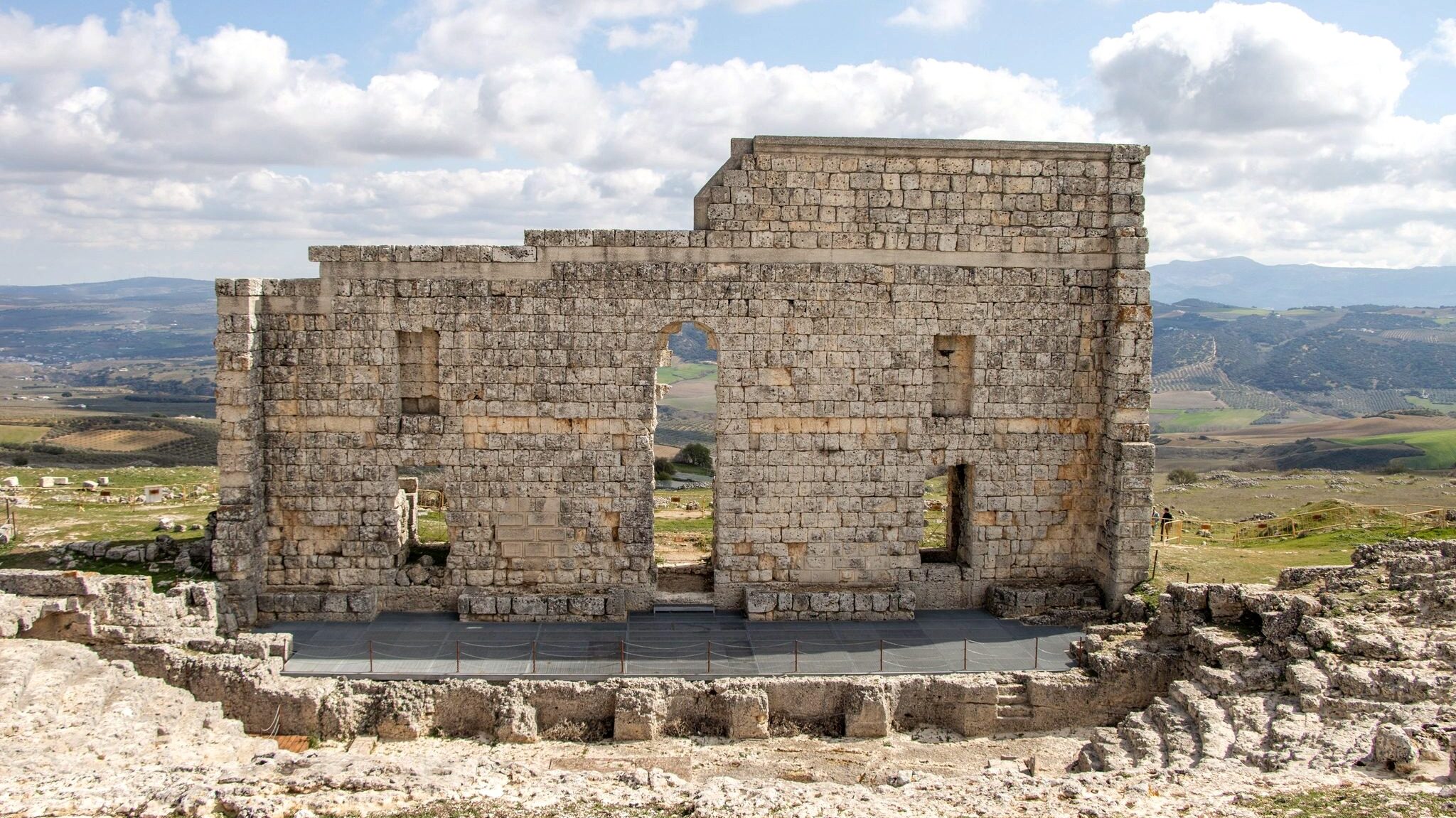
You’ll have no problem finding ancient ruins in Spain to explore, regardless of what part of the country you’re in. Some are more popular than others though, but sometimes it’s the lesser known historical sites that are the most interesting. Visiting the Roman ruins of Acinipo is one of the best day trips from MAlaga, as well as one of the best day trips from the Costa del Sol, and you can easily add it into your road trip plans.
Acinipo is also one of the more interesting Roman ruins near Seville, after Italica of course. There’s nothing better than having an entire archaeological site to yourself, and chances are when you visit the ancient city of Acinipo there’ll be no one else around for miles.
Have you heard of the Roman ruins of Acinipo before? I’d love to hear about your experience in the comments below. And if you know of any other ancient ruins to visit in Spain let me know. Feel free to follow me on Instagram too so you can keep up to date with my latest travels.
This post may contain affiliate links, which means I may earn a commission from the discount codes used or when a link/ad is clicked. All purchases made will come at no extra cost to you, and I only include products and services that I would personally recommend.
Pin this blog post for later!
